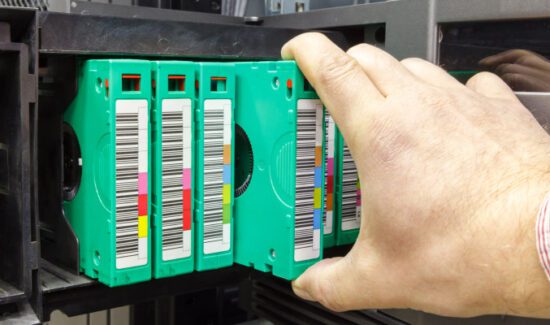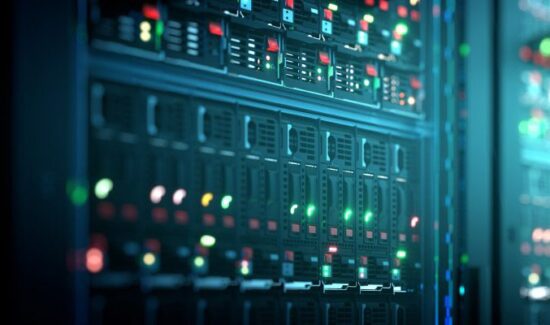SSD Expert Reveals 3 Enterprise Storage Trends to Know


Solutions Review’s Expert Insights Series is a collection of contributed articles written by industry experts in enterprise software categories. In this feature, ScaleFlux VP of Product Management JB Baker offers his most noteworthy enterprise storage trends to be aware of this year.
 It sometimes seems like we’ve been talking about some themes in IT forever to the point that they are almost cliches, but despite the promise, they haven’t quite taken off yet. Yet ask analysts, customers, vendors, and other industry stakeholders, and you’ll hear the same refrain: we’re only at the beginning of the journey towards smarter, greener, and more decentralized infrastructure. I believe this is finally becoming true for some long-promised technologies. As I engage with customers, partners, and the press, I see excitement building and, more importantly, budgets allocated to these emerging trends. These developments are shaping the storage industry in 2023, and we should keep an eye on them if we don’t want to be left behind.
It sometimes seems like we’ve been talking about some themes in IT forever to the point that they are almost cliches, but despite the promise, they haven’t quite taken off yet. Yet ask analysts, customers, vendors, and other industry stakeholders, and you’ll hear the same refrain: we’re only at the beginning of the journey towards smarter, greener, and more decentralized infrastructure. I believe this is finally becoming true for some long-promised technologies. As I engage with customers, partners, and the press, I see excitement building and, more importantly, budgets allocated to these emerging trends. These developments are shaping the storage industry in 2023, and we should keep an eye on them if we don’t want to be left behind.
Enterprise Storage Trends
Computational Storage Becomes Mainstream
As we are constantly reminded, Enterprises are generating lots of data and there are no signs of it slowing down. Finally, people are waking up to the reality that “scale-out” is not sustainable; data center space is at a premium, and every added node means more costs and architecture challenges, not to mention the pressures added by the current economy. Enterprises race to get more functionality from their servers (including better endurance and performance, higher capacity, and cost savings) and are looking for alternatives but are reluctant to add complexity, the critical factor that has blocked computational storage from going mainstream until now.
Finally, NVMe-compatible SSDs with computational storage technology on-board are available, offering a realistic alternative to commodity storage that alleviates many of these issues by offloading the server’s central processing unit (CPU) from unnecessary storage processing, like compression and encryption. These next-gen drives are easy for anybody to get more functionality from their servers, including better endurance and performance, higher capacity, and cost savings. As a result, we expect to see the adoption of plug-and-play computational storage grow significantly in 2023, as now there is a real choice between commodity solid-state drives (SSDs) and SSDs with computational storage technology packaged as native NVMe-compatible drives.
Edge Computing Takes Off Now That Technology to Support Data Growth Expectations is Available
Massive data growth is pressuring companies to adopt a new approach to data storage as they embrace the edge computing trend. Its success will depend on its cost-effectiveness, and computational storage will serve as an essential building block for cost-effective edge computing infrastructure. Together, edge computing and the cloud will complement each other, forming the foundation for a future pervasive IT infrastructure.
We have heard about edge computing for a long time but enabling the data collection and processing necessary to unlock its promise has been limited by a gap in technology designed to operate in edge environments. In 2022, we saw that begin to change. Infrastructure optimized to operate with limited power, minimal maintenance, and denser performance have become more widely available. Our customers who deploy systems at the edge have long asked for high-endurance, high-capacity, high-performance SSDs that also offload compute resources and add no complexity, and in 2022 we finally delivered that technology.
The success of edge computing as we step into 2023 will largely depend on its cost-effectiveness, especially under current economic pressures. As semiconductor technology scaling reaches its limit,
heterogeneous and domain-specific computing becomes critical in maintaining the cost-effectiveness of IT infrastructure. Another key component of the future heterogeneous computing paradigms is computational storage, which will serve as an essential building block for cost-effective edge computing infrastructure. Together, edge computing and the cloud will complement each other, forming the foundation of a future pervasive IT infrastructure. In the coming years, we can expect the continued growth of the cloud in the form of centralized data centers and the rapid expansion of edge computing.
The Storage Industry Will See Increased Pressure to Focus On Sustainability
In 2022, we began to have customers asking how we could help them meet sustainability targets in their data center for power, waste, carbon footprint, and physical footprint. We know this is only the tip of the iceberg, no pun intended, and the industry has a lot to figure out. Still, storage is one of the obvious domains to scrutinize as these requirements get implemented and are already becoming a new way to win business.
As enterprises evaluate the total costs of their infrastructure, there will be an increased focus on improving sustainability. Newer and more efficient leased data centers will begin to have the edge over aging, enterprise-owned facilities. Along with more traditional criteria such as cost and performance, we will see more enterprises including environmental footprint calculations in their infrastructure decision-making.
Significant improvements in the lifespan of SSDs will reduce waste and carbon footprint, especially in write-intensive environments. Additional savings in power can be had with better-optimized devices and the reduction of unnecessary processing on the CPU. Greener technology that can also deliver on the performance and cost demands in the modern data center will grab the attention of enterprises of every size and market.
- Unlocking the Secrets of Sustainability - September 15, 2023
- SSD Expert Reveals 3 Enterprise Storage Trends to Know - February 23, 2023






















